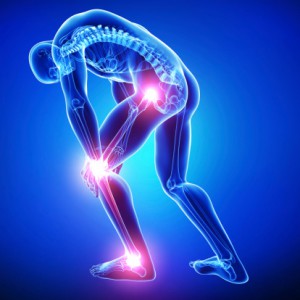Maybe you’ve heard before that people with achy joints or arthritis can predict cold weather coming long before the local weather man. Or maybe you suffer from back pain that seems to get worse every time winter strikes and the temperature drops below freezing. The technical name for this condition is “cold allodynia”, but what is actually happening with your body when these instances occur?
Some experts believe that barometric pressure on your joints is the cause of cold allodynia. There are many receptors in the bodies’ nerve endings which detect things like texture, temperature, and of course pressure. However, these nerve endings may also pick up on changes in barometric pressure in the air and respond, in some people, with a pain reaction.
So what can you do about back pain during cold weather? Well, the first thing you can do is to keep warm and bundle up. Extra layers are extremely helpful to retain heat and keep the cold out. Understanding how and why winter weather affects your body is the first step to mitigating your pain. With this in mind, here are some important facts about back pain this season:
- While there is no known connection between barometric pressure and back pain, cold temperatures are associated with an increased risk of back injuries. One thing we do know is that when you’re cold, the muscles, tendons and ligaments in your back tighten and become less flexible, thereby making them much more prone to injuries that in turn can cause you plenty of back pain.
- Dark and gloomy days in winter may contribute to depression, which in turn can cause or aggravate chronic back pain.
- Shorter, colder days may discourage you from exercising, which can be a formula for back pain. After all, that early morning run or evening bike ride might be dangerous as well as uncomfortable when it’s dark, wet and/or cold outside.
Many people say they experience back, neck and joint pain either just before a storm or when the temperature falls quickly, implying that their bodies are in some way able to register the barometric pressure changes that occur during such times. However, to date, there is no scientific evidence proving a correlation between declining atmospheric pressure and back pain. The takeaway from this is that winter back problems may be avoidable when you wear the right clothing to keep you warm, stretch your muscles regularly, stay active and employ basic fall prevention techniques when needed.
The Pain Management Center at Flushing Hospital is designed to diagnose and treat a vast array of chronic pain syndromes. For any questions about the services provided, please call 718- 670-8797.
All content of this newsletter is intended for general information purposes only and is not intended or implied to be a substitute for professional medical advice, diagnosis or treatment. Please consult a medical professional before adopting any of the suggestions on this page. You must never disregard professional medical advice or delay seeking medical treatment based upon any content of this newsletter. PROMPTLY CONSULT YOUR PHYSICIAN OR CALL 911 IF YOU BELIEVE YOU HAVE A MEDICAL EMERGENCY.

